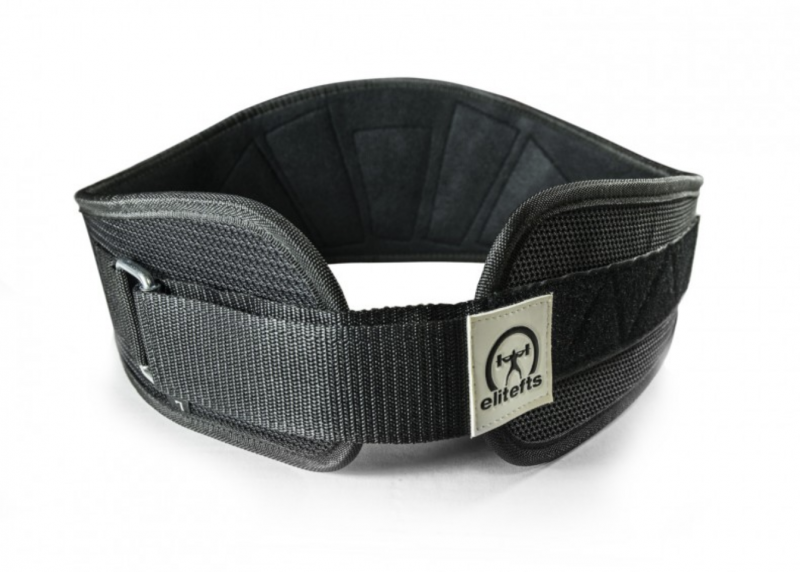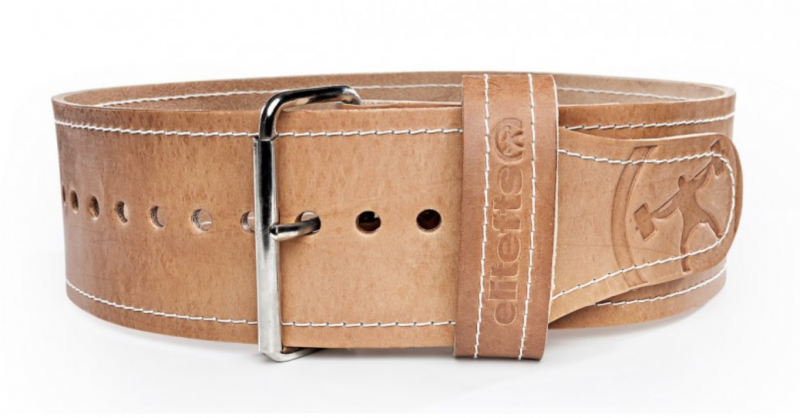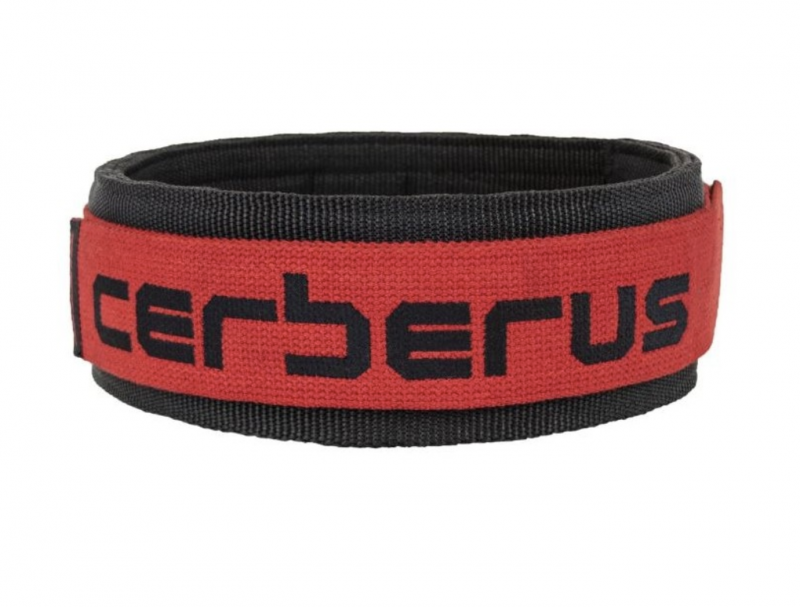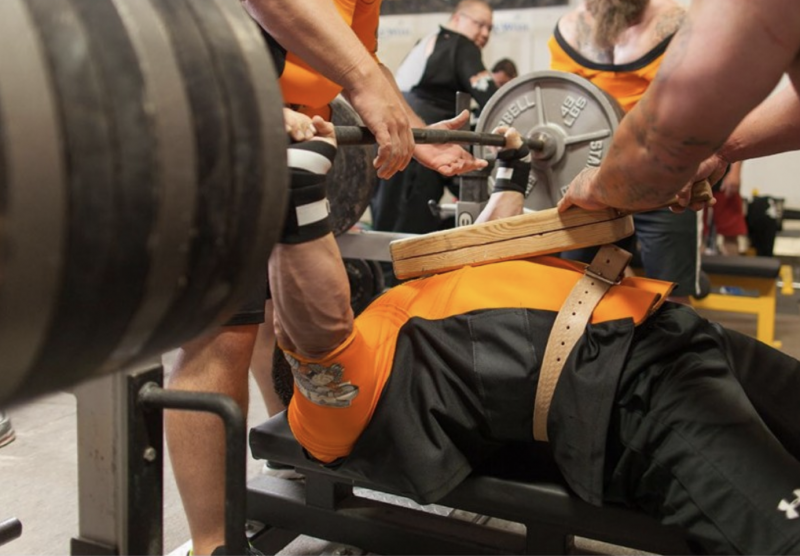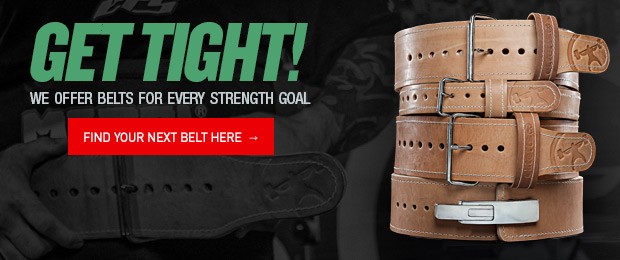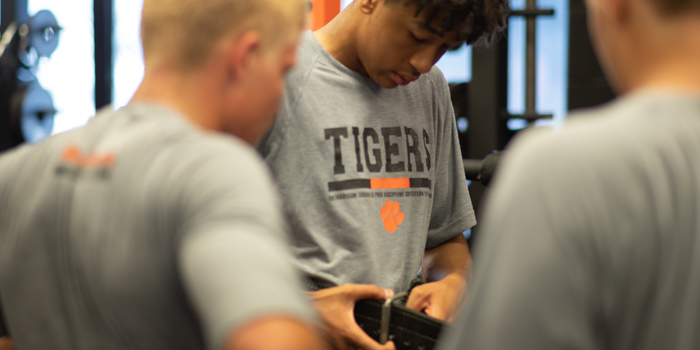
In this article, I want to broach the topic of athletes, or for that matter, anyone wearing a belt when training—a subject not everyone will agree on. Amazing, I know. I will talk about the benefits of wearing a belt during training and what needs to happen before you wear one. If you are a coach, I'll suggest whether or not to have your athletes utilize them, and what is the best belt to use depending upon who is using it and their goals.
Benefits
There are a few main benefits to wearing a proper training belt during big lifts where your spine is loaded (i.e., multiple squat variations, deadlifts, cleans, etc.). Most notably are the following:
1. Belts provide a brace for your rectors and abdominals to push against.
This causes interstitial pressure to build in the abdominal cavity (baring you take a belly breath). Essentially this pressure build-up reinforces your trunk, adding stability and taking directed pressure from the spine. There is still load on the spine, of course, just helps to decrease.
Now understand, if you do not take the proper breath and brace your abs against the belt, you will not come close to getting out of it what you want.
2. With your trunk reinforced, you will be able to apply more force to the bar.
Remember Newton's 3rd law; every action has an opposite and equal reaction. To lift 400 pounds, you need to apply 405 pounds of force to the ground. As that force you're applying travels up your body, you want all of it to be applied to the bar. If the force dissipates at all on its way up, the bar will not move, gravity will take its course, and you will fail the lift.
Phase 1: How You Should Start Young Athletes in the Weight Room
If your trunk acts as a shock absorber and fails to allow all that force to be fully applied, you will fail the lift. Reinforcing your trunk with a belt CAN help the transfer of that force through the trunk by again reinforcing stability and rigidity. I say CAN because you still have to know how to utilize the belt properly. You can't just throw it on and expect greatness to occur.
3. With proper training and experience, a belt can also help with the biomechanics of the movement.
If your trunk is something that continually gives out or is weak compared to the rest of your development, increased stability and rigidity can help you maintain better alignment and, therefore, better positioning throughout a lift. The word again is CAN help. Proper use and experience is everything.
Downsides
The only downside I see to utilizing a belt is if you use it too early and become dependent upon it. Trunk strength is very important for all. Trunk strength can and will increase if you use a belt, but being able to know how to brace yourself and activate those muscles are everything—this is where the timing of when you start to incorporate a belt into your program comes into play. Outside of that, it's just another piece of equipment that can help.
And if you're that person saying, "Well, as an athlete, you can't wear a belt on the field of play, so why wear one in the weight room?" you are an ignorant individual that doesn't truly understand the benefits of belts.
Now, with that said, I will also say this. I have never let an athlete utilize a belt in the weight room in my 20 years of collegiate coaching. Then why write an article which seems you are a proponent of wearing one? This is an article about facts. I haven't found a need for any of my athletes to wear one yet. I've had 600+ pound squatters who never used a belt. That all comes down to programming and coaching. But I digress, let's move on.
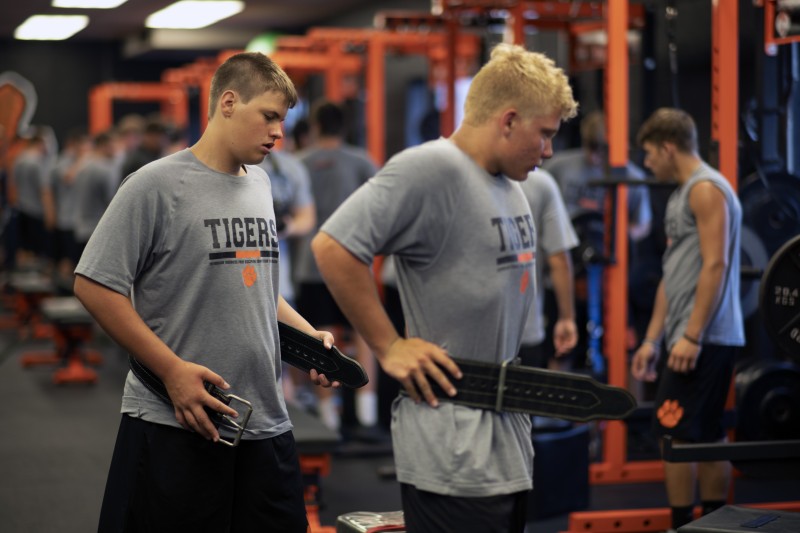
High School
Listen, I get it. There are a lot of high schools out there where they don't have money, don't have the facilities, or don't have the expertise to know what to do with novice high school athletes. Usually, the sport coach is the strength coach. Unless the sport is football, there are a lot of high school athletes that don't lift or have minimum exposure.
A lot of these places equate safety and lifting with wearing a belt—like that is going to keep kids from getting injured. And really, it's not the schools that do this. It's usually the sport coach, parents, or kids themselves wanting to throw one on. Why? Because they will "keep me safe," "let me lift more weight," and "look cool." What I do know is that it all comes down to a lack of education, expertise, and just not giving a shit. When you have a coach that has to do everything, things will go unchecked. Nowadays, high schools have weight lifting classes. What a joke. That comes down to who is teaching it. And again, most of those individuals are just ignorant on the subject. Remember, ignorant doesn't mean stupid.
So, the answer to the question, "Should high school athletes wear weight belts during lifting?" is it all depends. Is it necessary? No. What is necessary is we teach these athletes proper technique, bracing, and start them on a program that is designed for the novice. I don't know how many times I've seen a coach start a freshman on back squats, bench pressing, and cleans week one. Why? In what world does that make any sense at all what so ever?
A: "Hey coach, I've never lifted before. What am I doing today?"
C: "Let's test your squat and see where you're at."
And yes, this happens ALL THE TIME!
Anyways, if you have an athlete you started out as a freshman, taught them proper training technique, and have seen through years of training, would you consider implementing a belt? If so, what is your goal in doing so? You will have to have an answer that makes sense. You have a kid that legitimately squats 500 pounds with great technique and you want to reinforce the trunk for safety and health purposes while still doing everything they will need program-wise. Great, go for it. Know there will be a learning curve and get them used to wearing one before you load them up. Do they need it? That is up to the coach and depends upon the circumstances. Just don't think that if you throw one on you or they are safe, and injuries can't occur.
College
You know, this really is the same as high school or anyone for that matter. What it comes down to is the level of the lifter(not the athlete; very few athletes are great lifters), the needs as to why(what is your goal in using one), your philosophy and the sport coaches philosophy, and even more simple is do you have the budget for them. Understanding what they are truly used for, when to use them, and making sure they are not just filling a gap or deficiency makes all the difference. There is no substitute for hard work, good programming, and great coaching.
Lifters
So, say you are nothing more than a lifter. Maybe this is post-college. Maybe this is your whole life because you were 135 pounds in high school and sucked at sports. You'd be amazed at how many of those stories I've heard from powerlifters. Whatever the reason, everything above still applies. Whenever you decide to put a belt on depends upon the level of lifter you are and your goals by wearing one. A belt cannot be a substitute for deficiencies. That doesn't mean you shouldn't wear one, but your programming should reflect bringing up your weakness. A belt should be just another piece of equipment.
What I will say it this, I use my belt as little as possible. I push myself with weights to get my trunk as strong as possible, only utilizing it when necessary. When squatting, pulling, and lifting big weights, you need to be strong head to toe. You need to be able to stabilize your body (on your own) and should have complete control over the activation of those muscles. Most times at the height of my strength and while squatting, I wouldn't put on a belt till I was over 750 pounds. I pushed myself to that level by focusing on having control over my body and having perfect technique as I could. Most all my accessory movements such as RDLs, conventional deadlifts, good mornings, etc., I would not use a belt unless necessary, or I was at an RPE of 9-10. This made all the difference for me.
I would see individuals put a belt on for 135 pounds on the squat. Hey, maybe they needed it for whatever reason, but I really could never understand why. I was and still believe that if something is going on to the point you need a belt that early in the lift, you need to get that fixed. And these were strong guys, like 800-pound-squat strong. Again, I'm not giving them shit. It's all about fixing what needs to be fixed—not just throwing bandages on a wound that needs stitches.
I hope you get the picture here.
First Steps
I hope by now you get the picture, but this is where you should start before adding a belt:
1. Work on proper movement patterns with all movements you perform. There is no substitute for proper technique and biomechanics.
2. Teach proper bracing. Learn the Valsalva maneuver. Simply you take a deep belly breath in and hold before you perform the movement. After the breath is in, push your belly out to increase interstitial pressure in the trunk. Keep the breath in during the descent of the squat. On the accent, you may leak some air out like a tire releasing air through the valve stem, or you can hold it to the top. Once at lockout, breath out. Repeat if doing multiple reps. If you are experienced, you may hold the breath for multiple reps, but don't try unless you know what you are doing and can do.
3. Get strong without using a belt. Strength takes time and consistency—a long time. Training is a marathon.
4. The more novice and weak you are, the more trunk movements you should perform. Get your back and abs strong as hell. If you don't have rails running up your back and obliques, then keep training.
Belt Selection
Belt selection can be the tricky part, but I do have recommendations that I feel work best for different levels and movements.
1. elitefts Contoured Nylon Lifting Belt
For athletes (both high school and collegiate), I recommend the elitefts Contoured Nylon Lifting Belt. These for beginners are very adjustable, comfortable, and provide all the support you would need. They're also very affordable. I still use one for some of my specialized development movements for the squat and deadlift.
2. elitefts Premium 6.5MM P2 Single Prong Powerlifting Belt and elitefts Premium 13MM P2 Power Belt
For novice lifters, I would still recommend a nylon belt to start. Again, inexpensive and all you will need to start with.
For experienced lifters, I would move onto a leather belt but wouldn't go straight to a 13mm right away. They are aggressive and stiff, and there will be a time for it. elitefts came out with a 6.5mm leather premium belt that is awesome. I would recommend this to any level lifter but is better for the more experienced.
For advanced lifters, the elitefts Premium 13mm P2 Power Belt is where you can get into your aggressive belts for your big squats, especially for geared lifters. Yes, raw as well. I would go with a 13mm, single prong. The double prong is unnecessary unless you like struggling to get it on and off.
3. Cerberus Triple-Ply Deadlift Belt and elitefts Premium 13mm P2 Lever Belt
For deadlifters, I recommend the Cerberus Triple-Ply Deadlift Belt. Now I wear a variety of belts to do my deads. It all depends upon if I'm in gear, raw, pulling conventional or sumo. I consider if it's the main movement or specialized movement as well. But I do recommend two different belts. A triple-ply polyester belt with Velcro latching. Extremely comfortable and has all the support you need.
I also recommend a leather lever belt, 10mm. Now I am lucky enough to have one that elitefts used to sell. They have the 13mm, which is awesome. I just like a little less thickness when deadlifting. I don't know that many individuals caught on with the 10mm so they stopped selling it. It's beeping awesome!
4. elitefts Premium P2 Bench Belt
For benchers, seriously, unless you use a bench shirt, a belt doesn't do dick. You do not have to agree all you raw-bench, belt-wearing wonderful human beings. I still laugh every time I see it. I've been training for 27 years. Not necessary, but if you do shirt work or want to be that guy, elitefts does have the best one by far: elitefts Premium P2 Bench Belt.
For those who think that wearing a belt will put you at a disadvantage in gaining strength through your trunk, they're mistaken. A belt is a support mechanism. Your trunk still supports, contracts, and strengthens while wearing a belt and gaining strength. Again, when not used properly, a belt is useless. It's like a raw guy saying geared lifters are cheating or a raw guy thinking they can just put on gear and automatically squat the house. It doesn't work that way. Your body will operate differently when external supportive equipment is applied.
And if you think your non-belt squat will not get any stronger as your belted squats strengthen you are mistaken. It might not be as strong because your body has gotten accustomed to the extra support, but overall strength will always improve. Again, to those who say you can't wear a belt on the field…blah, blah, blah. It doesn't mean you won't be applying more force to the ground. The more force you apply to the ground, the faster you run, the higher you jump, the harder you can hit.
Wear a belt or don't wear a belt. It's up to you. Just don't be misinformed of the benefits or mislead by idiotic information. And make sure you train your athletes correctly in technique before you advance them.










